| November 4, 1884, born in
London, England
|
|
November 5, 1914, Attested into the 21st
Battalion in Kingston, Ontario
Ø Number 59907 (temporary number 350)
Ø Next of kin given as Mary Ann Stares, with an address given as Idris
Mineral water plant in Camden Town, London, England
Ø Previous occupation given as Labourer
Ø No previous military experience given
Ø Religion given as Wesleyan
Ø Assigned to “C” Company Scout Section
The battalion trained in the Kingston area
through the winter of 1914-15
|
|
May 6, 1915, embarked the RMS Metagama in
Montreal, Quebec

|
|
May 15, 1915, disembarked in Devonport, England
and the battalion proceeded to the West Sandling Camp, near Hythe, Kent to continue
training
|
|
September 14, 1915, embarked the St. Seiriol in
Folkestone
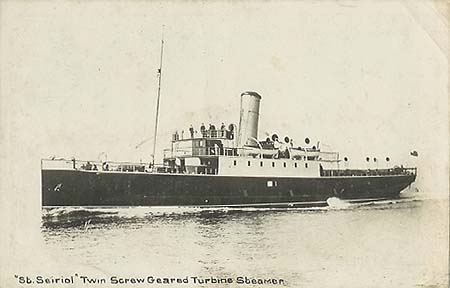
|
| September 15, 1915,
disembarked in Boulogne, France and the battalion proceeded to St. Omer
|
|
Private William Stares was
an artist and drew many sketches while serving
in France and Belgium; beginning with the one below dated September 18, 1915.
The battalion had reached Dranoutre, Belgium in preparation to enter the front line.
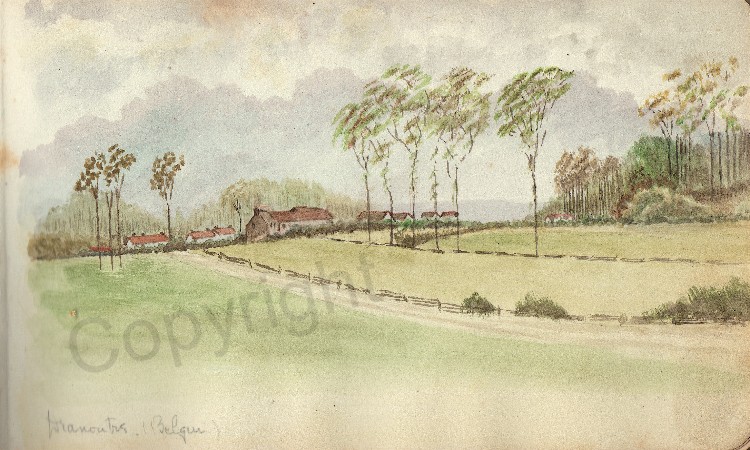
|
|
On September 19,
1915 the 21st Battalion moved into the front line “C” Trenches
for their first tour of duty at the front
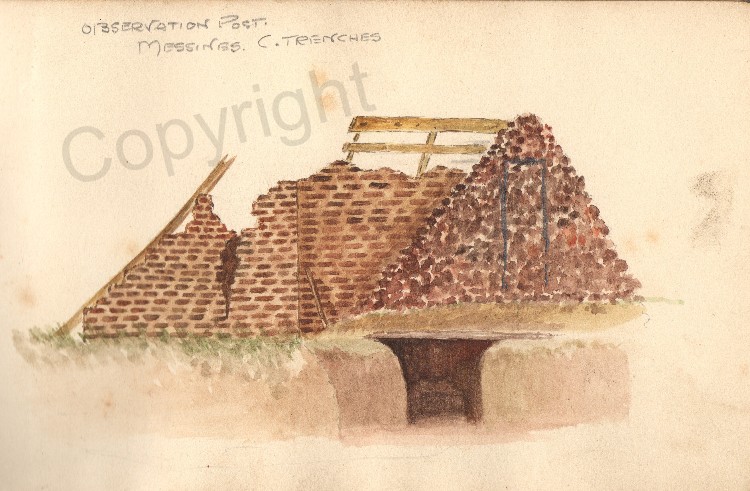
Above is the observation
post, while below is the section of trench
with the dugout where he was posted
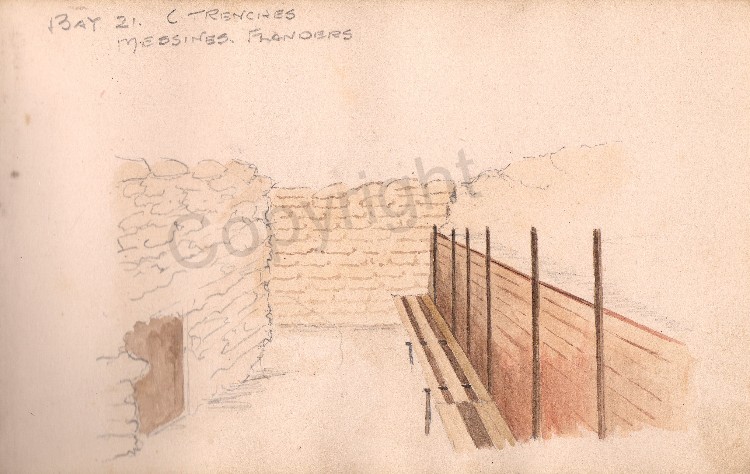
|
|
Private Stares wrote a
poem after the battalion was relieved and came out of the front line and moved into
billets in the town of Dranoutre
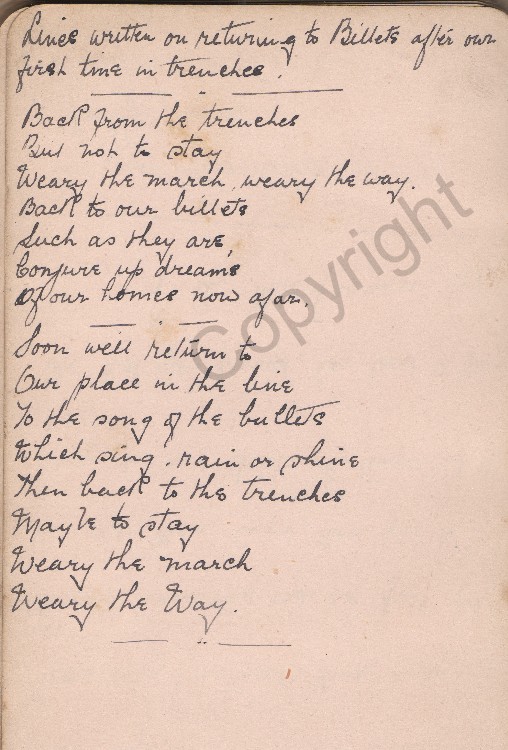
|
|
A road somewhere in France
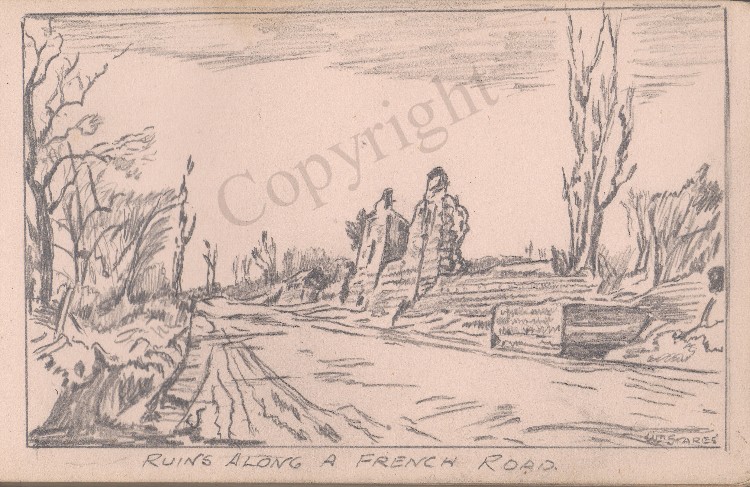
|
|
A street in the village of Dickebusch, near La Clytte

|
|
Below he sketched a ruined
farmhouse in the area

|
|
In October 1915, the battalion was in site of the town of Ypres, Belgium
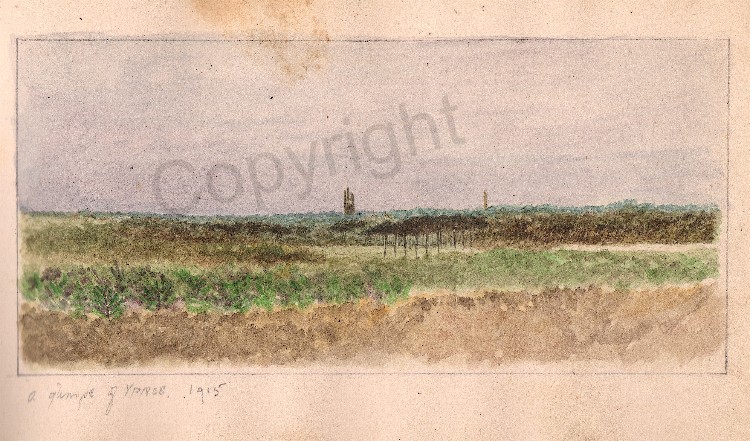
|
|
November 13, 1915 the battalion moved into Brigade Reserve and was
billeted in the town of Ridgewood. William
Stares drew this view looking towards Ridgewood from Dickebusch. In the centre of the drawing he points out a 21st
Battalion cemetery, which is now known as the Ridge Wood Cemetery.
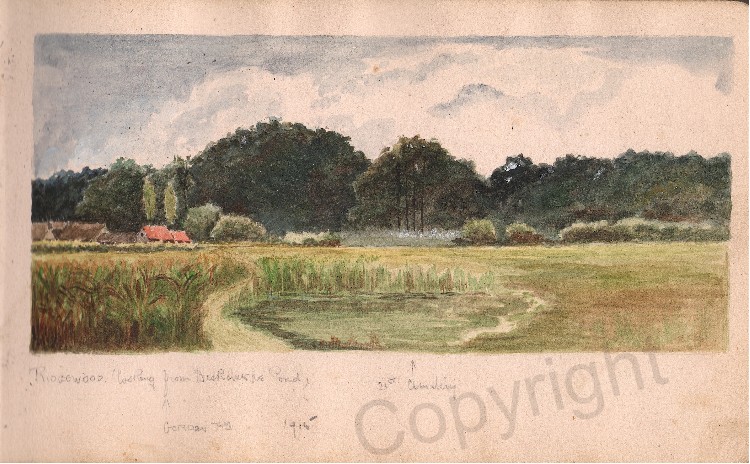
|
|
That same cemetery today

|
|
November 27, 1915 found the battalion in the N and O front line trenches,
within site of Hill 60 which saw heavy fighting prior to the battalion reaching the front
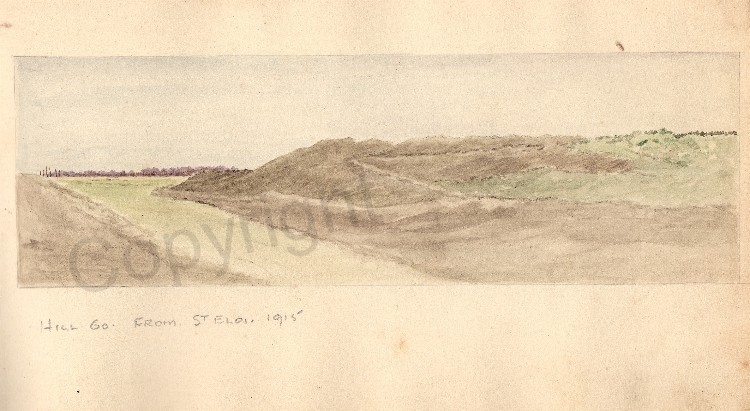
|
|
December 25, 1915 found the battalion in a rest area near Ridgewood
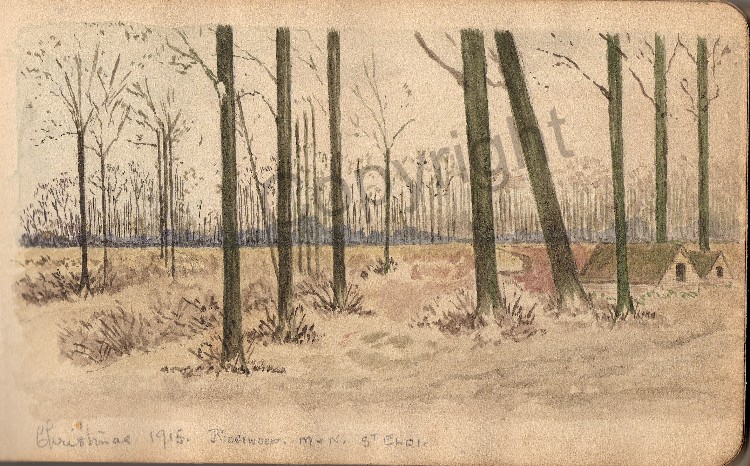
|
|
A poem written by William Stares regarding the possibility of being
wounded and sent to Blighty (England)
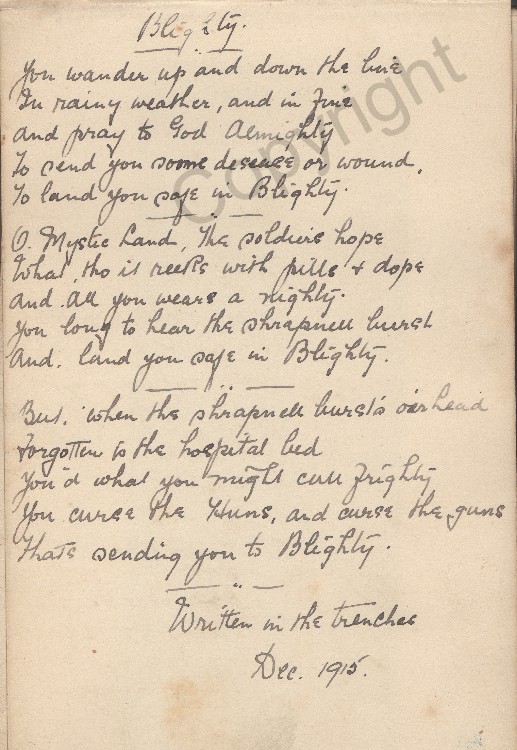
|
|
March 28, 1916 found the battalion in the Ypres Salient, near the Ypres
– Lille road, close to the Ypres - Comines Canal which forms part of the border
between France and Belgium
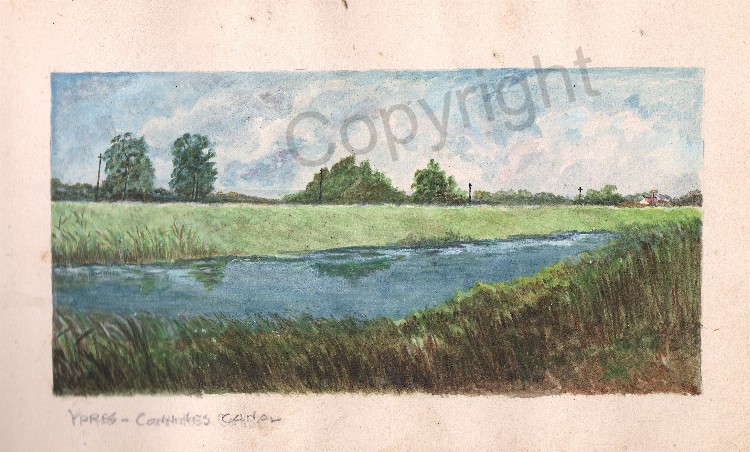
|
|
He drew a sketch of an aid station on the Ypres - Lille road
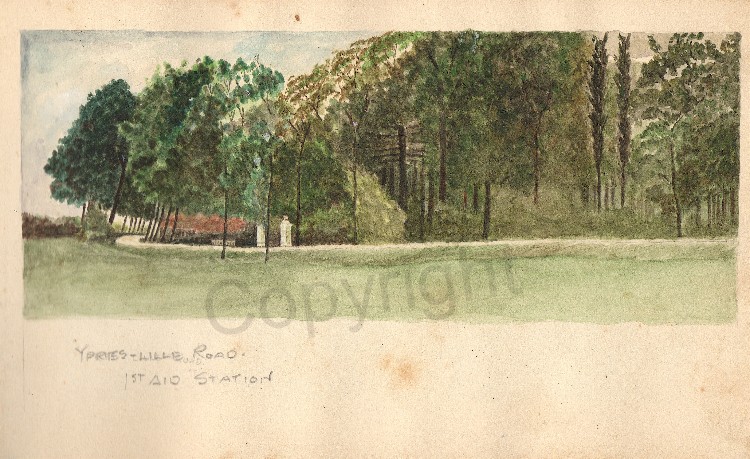
|
|
On April 6, 1916 the battalion moved into the “B” Camp, near La
Clytte, Belgium
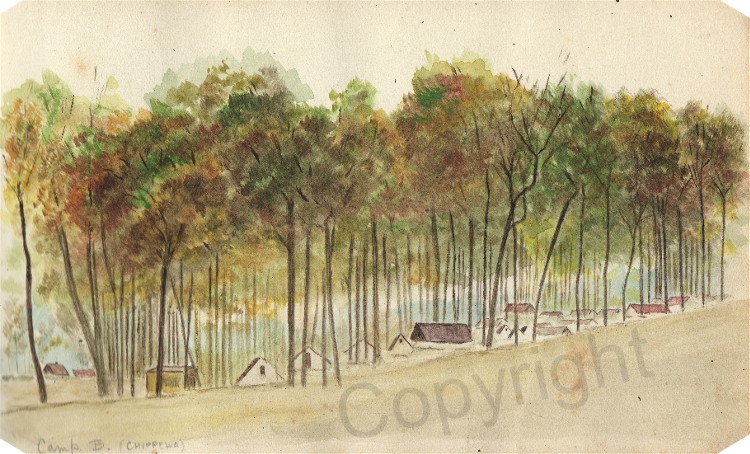
|
|
North-west of La Clytte is the village of Reningelst where a sketch was
made of a mill there
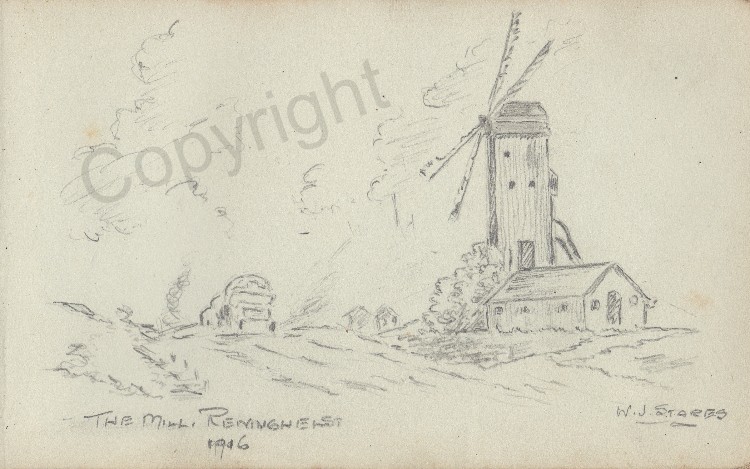
|
|
The mill above was used by several battalions for various purposes. Below are Australian officials using it for a
background of a film project
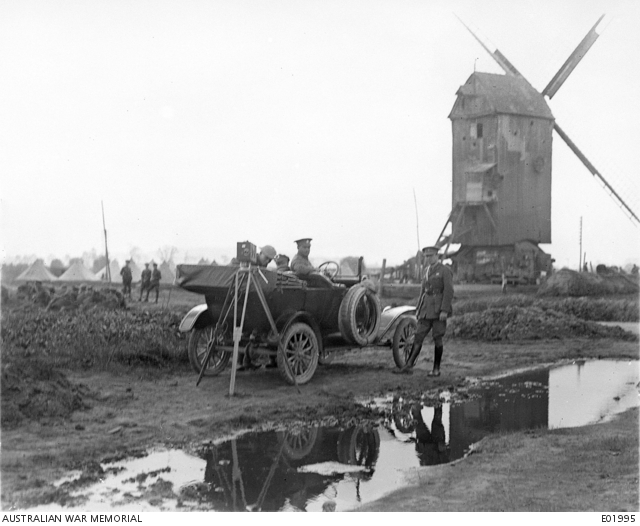
|
|
The town of Dickebusch is near La Clytte and Private Stares drew the
sketch below of one of it’s churches
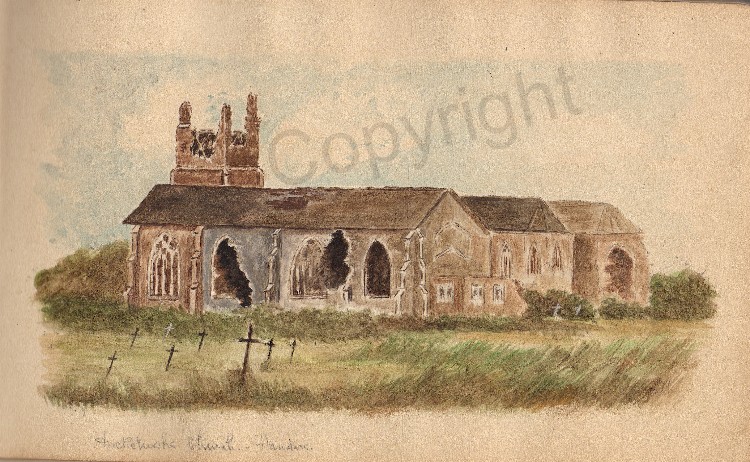
|
|
That same church today after it was rebuilt

|
|
Most likely on April 20, 1916, while in the village of Voormezeele, he
made the sketch below

|
|
Good Friday, April 21, 1916, Private Stares wrote the following while in
the front lines near Voormezeele, Belgium
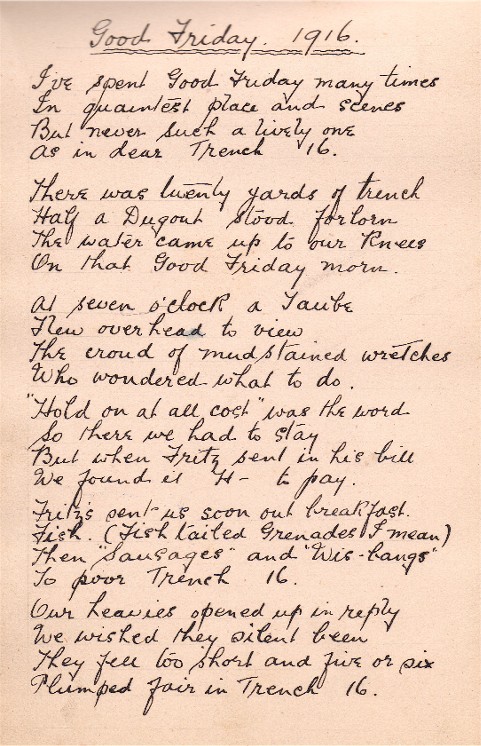
|
|
On Easter Sunday, April 23, 1916, he wrote the following

|
|
While in the Wulvergem area, south of Ypres, Belgium, he sketched
a church in ruins
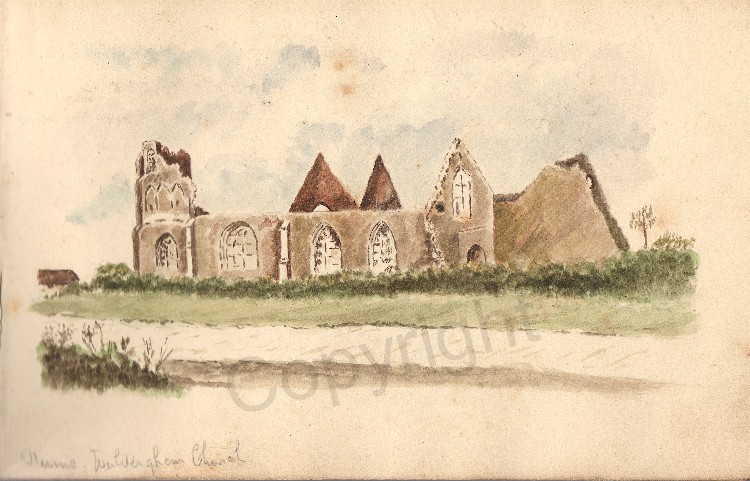
|
|
That same church as it appears today after being rebuilt
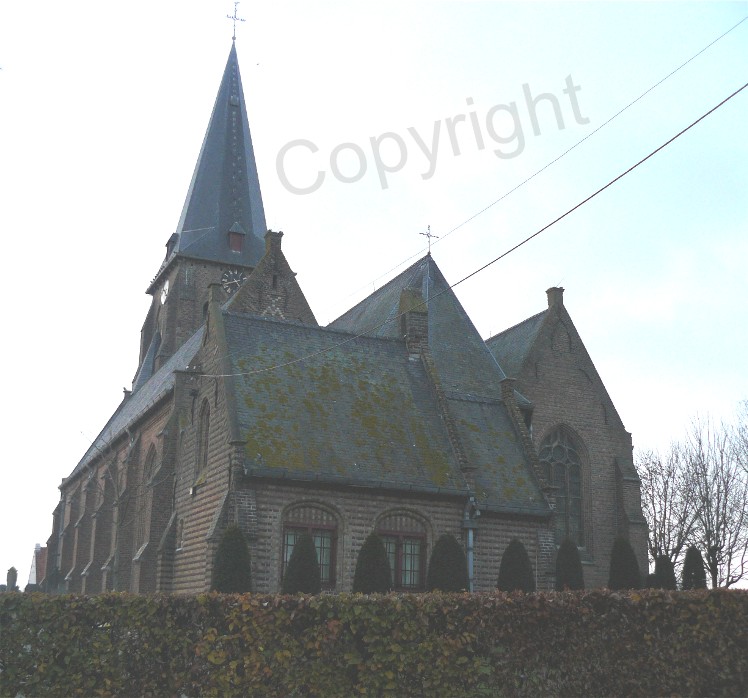
|
|
May 4, 1916, back in the “B” Camp, he wrote of the daily routine
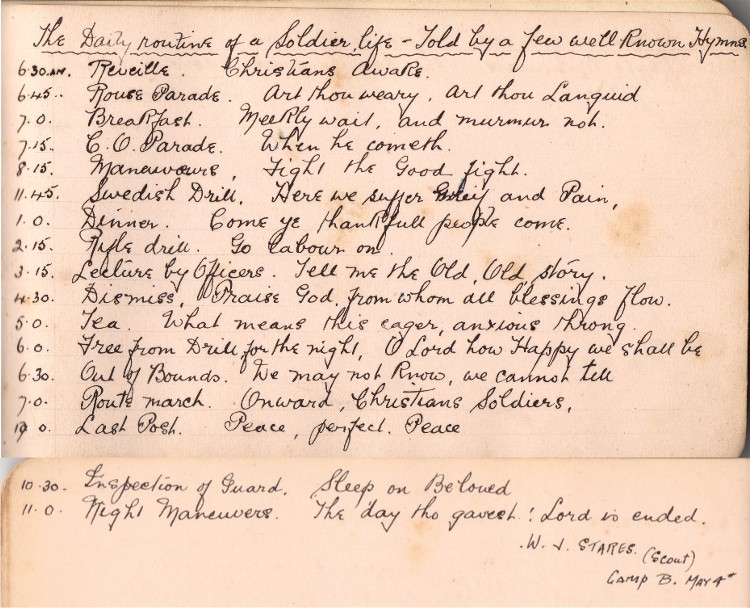
|
|
On May 9, he moved into the Scottish Wood area, south of Ypres and wrote
the poem below
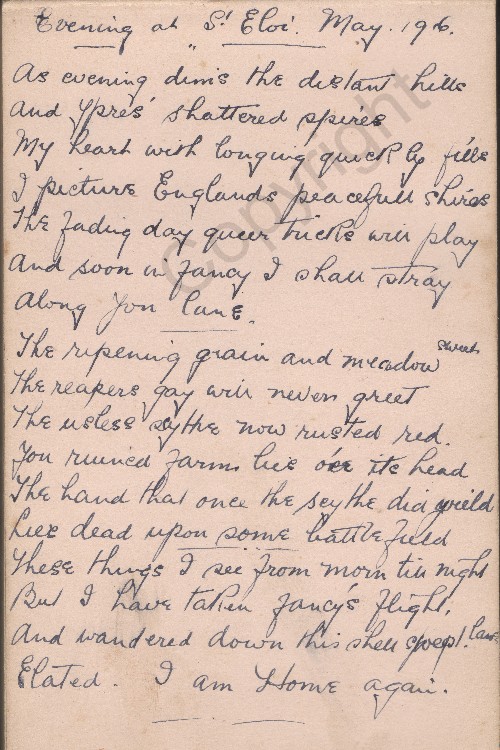
|
|
May 15, 1916, granted 9 days leave
|
|
While on leave in England, he met a young lady, who wrote good wishes in
his book

|
|
May 23, 1916, granted a 1 day extension to his
leave
|
|
May 27, 1916 the battalion moved into the Micmac Camp,
formerly called the “A” Camp
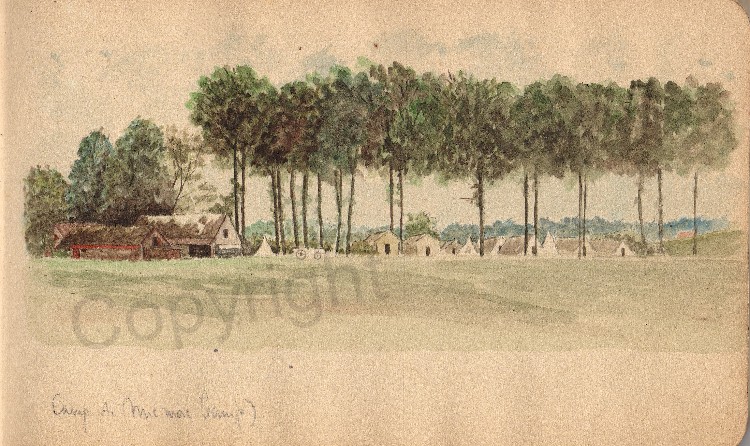
Above in 1916, below is a photo of the same family farm taken in 2005
It is interesting to note that the same family has farmed the property continuously for over 150 years
|
|
On August 22, 1916, the battalion moved into the Quebec Camp for rest
and cleaning of equipment
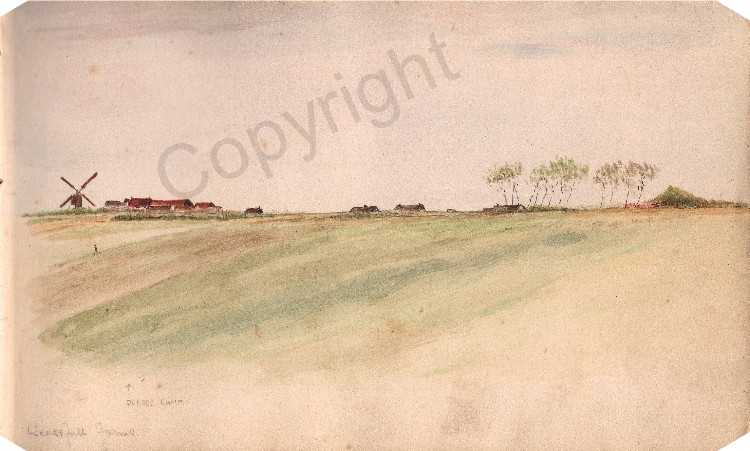
|
|
September 6, 1916 the battalion moved into billets in the town of Fieffes
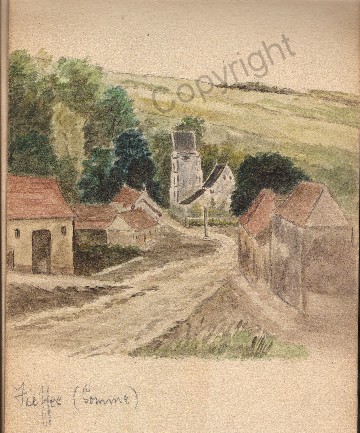
|
|
On the march towards the Somme on September 9, 1916, the battalion
passed through the town of Albert. The church
in the middle of town had a statue of the Virgin Mary that had been almost toppled from
the spire, and was leaning precariously. The
legend had it that if the statue fell to the ground, the hostilities would be over and the
German’s will have won the war. The
British Engineers secured the statue with cables to ensure that it did not happen. Private Stares drew his interpretation of the
view.
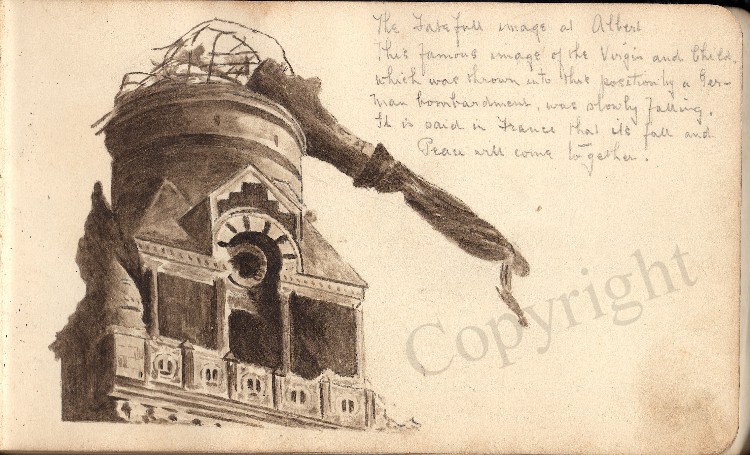
|
|
That church spire as it looks today
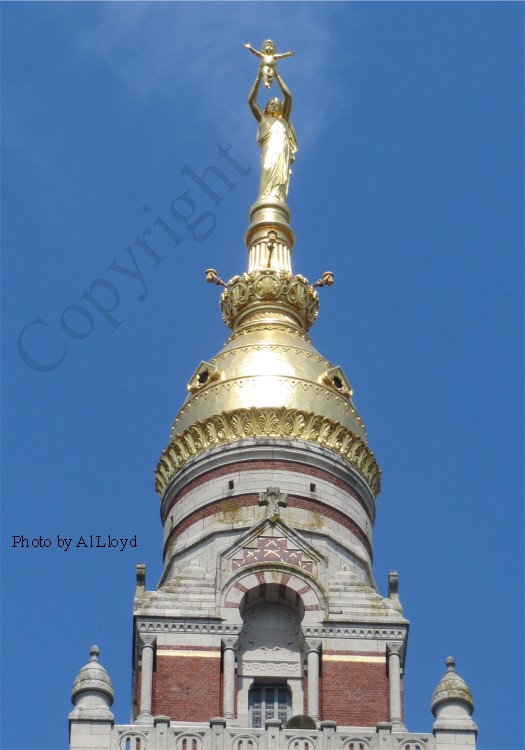
|
|
Below is a view of what was called Sausage Valley. It was on the approach to Courcelette where the
battalion was preparing a major advance as part of the battle of the Somme
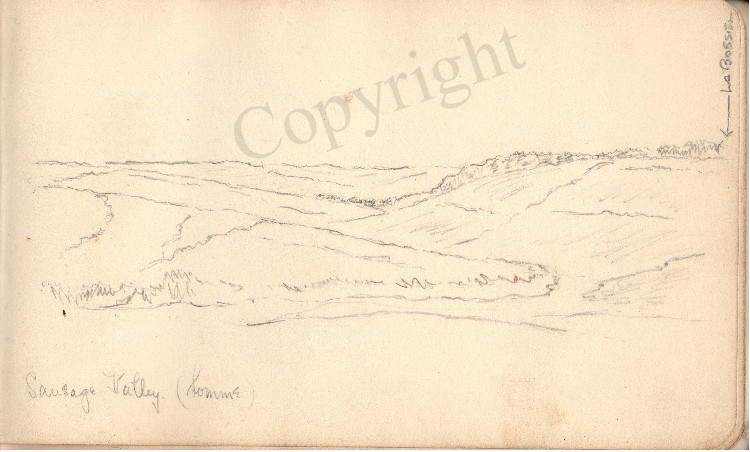
|
|
A view of the Somme River
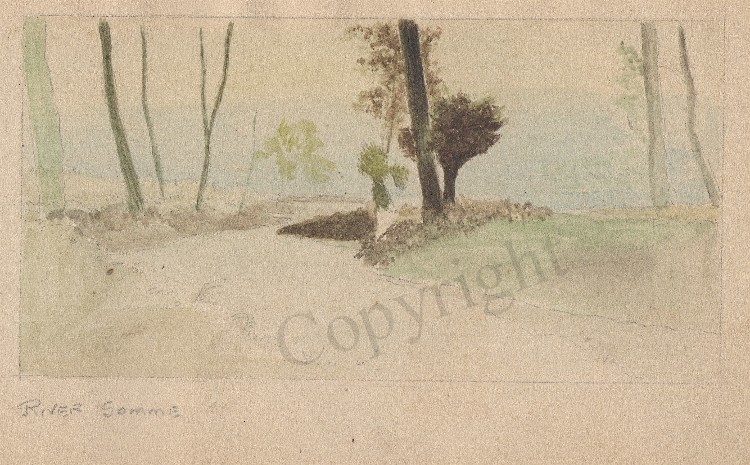
|
|
Prior
to the arrival of the 21st Battalion on the Somme, British Engineers blew up a
mine near the town of La Boisselle, east of Albert, France, as part of the opening action
for the battle of the Somme, July 1, 1916. This
created a very large crater.

|
|
That
crater is now called the Lochnagar Crater and is seen below as it looks today
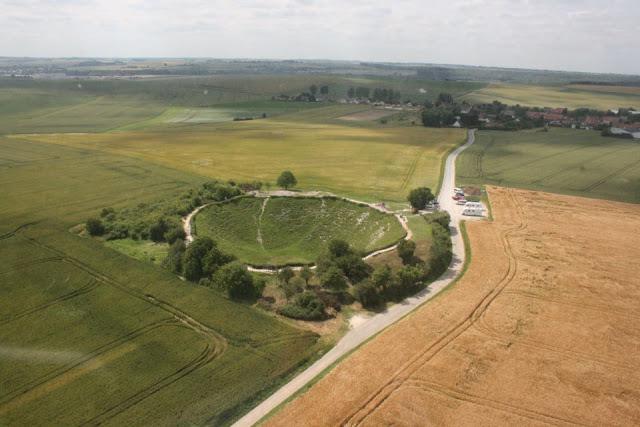
|
|
A small church in the village of Beaucourt, north of Albert, France
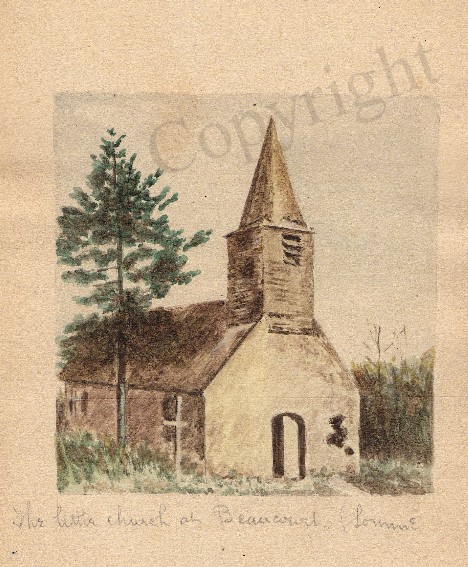
|
|
September 15, 1916 found the battalion attacking a German strong point in
a sugar refinery near Courcelette, on the Albert – Bapaume road. The losses were extremely heavy. This sketch shows his view of the carnage caused
by the artillery shelling
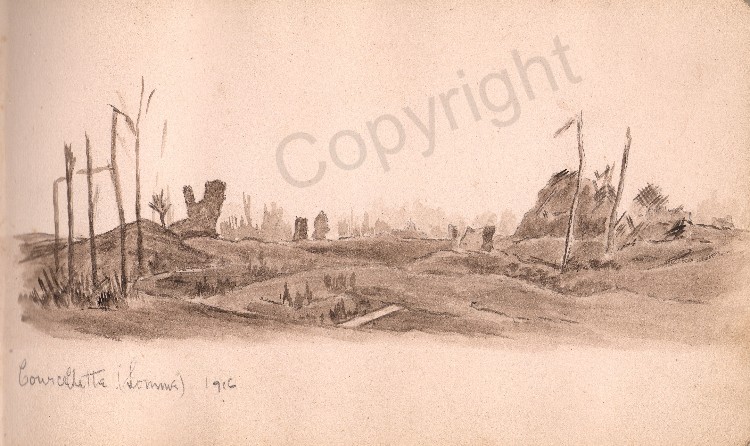
|
|
A sketch of the last house standing in the town of Courcelette
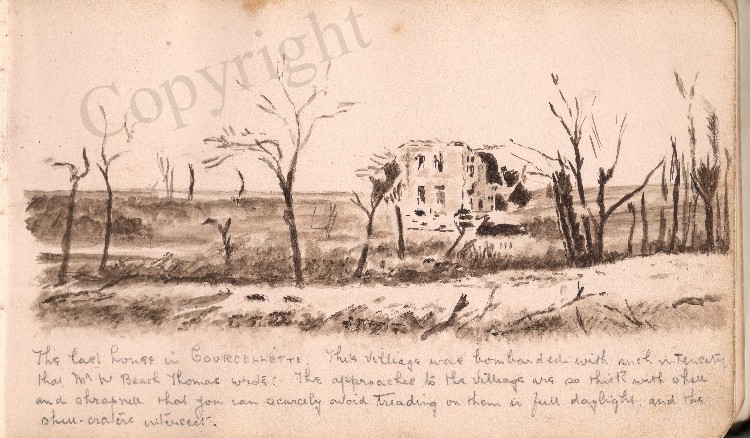
|
|
September 19, 1916 the battalion was relieved from the front line and
moved into billets in the town of La Vicogne

|
|
The dugout where he spent Christmas day, 1916 near Vimy Ridge, France
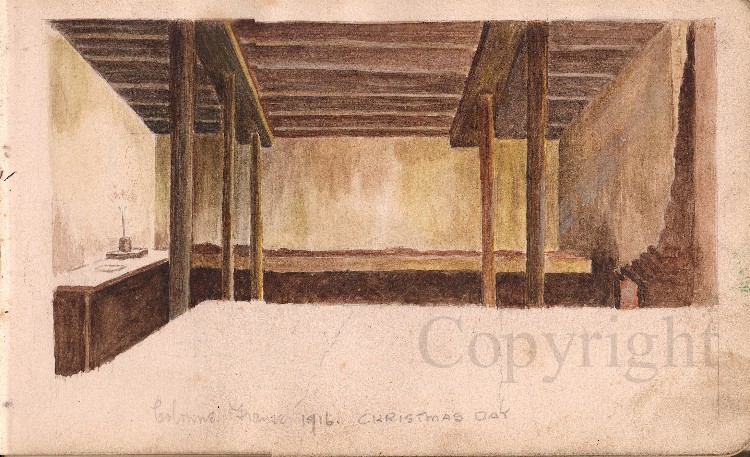
|
|
Another sketch done Christmas Day, 1916
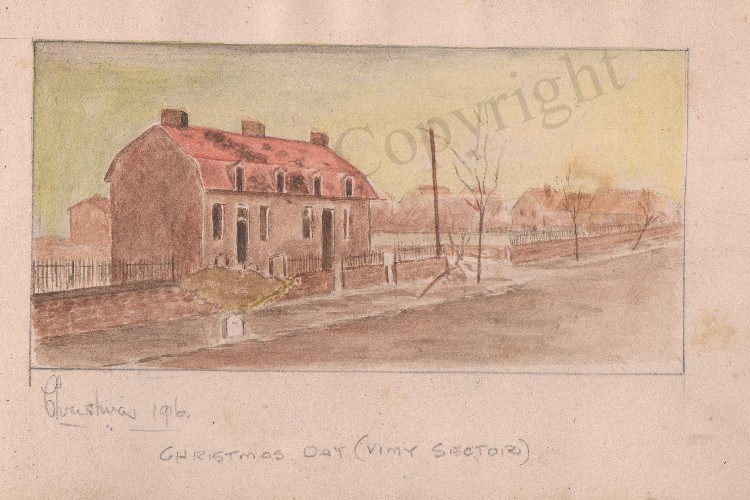
|
|
In early January 1917 the battalion trained in the Bully Grenay area for
an upcoming raid scheduled for January 17. Just
west of Bully Grenay is the village of Pernes. Here
a sketch was made of a church
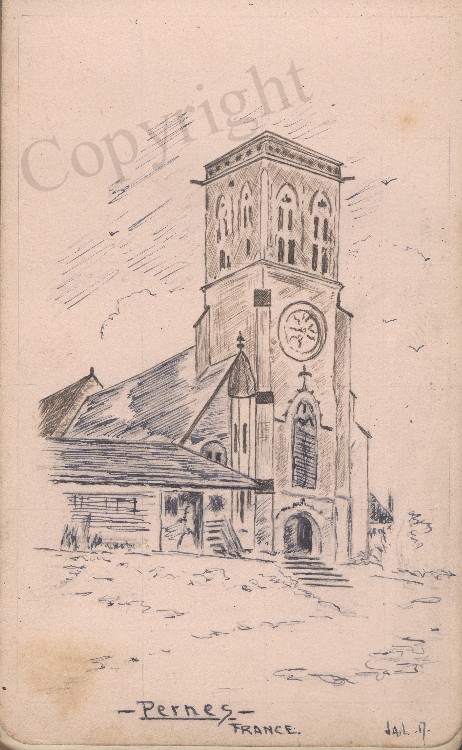
|
|
February of 1917 the battalion was in the front line again. This time near Neuville St Vaast, where he drew a
sketch of an observation post
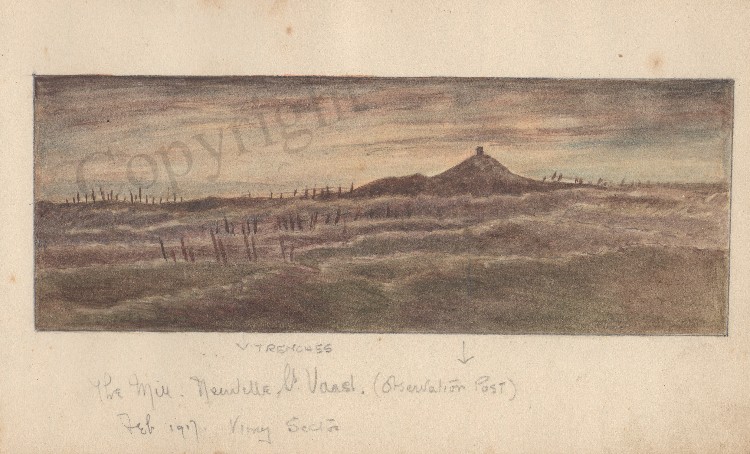
|
|
Another view of the front lines near Neuville St Vaast, showing the
cemetery near the front line.
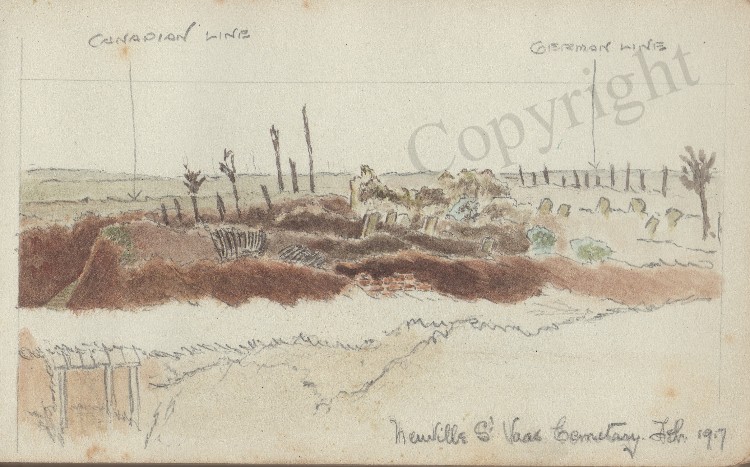
|
That same cemetery as it stands today, now called
the Canadian Cemetery No. 2, Neuville-St. Vaast.
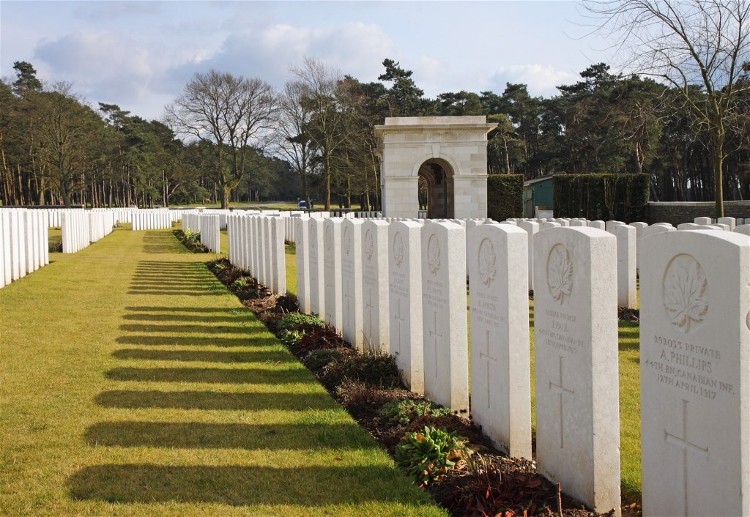
|
The battalion remained in the Neuville St Vaast
area, alternating between spending time in the front line and training for the upcoming
attack on Vimy Ridge. While in the front line
in March, another sketch was made showing the conditions in the line
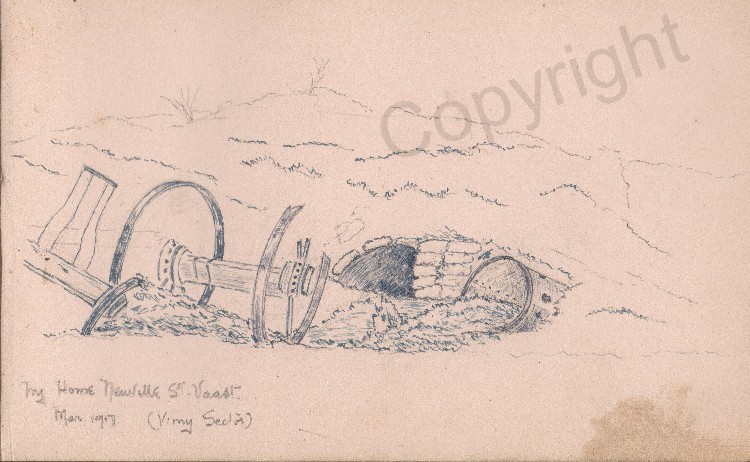
|
|
May 14, 1917, after being wounded, he was
invalided to England aboard the Hospital Ship St. Andrew
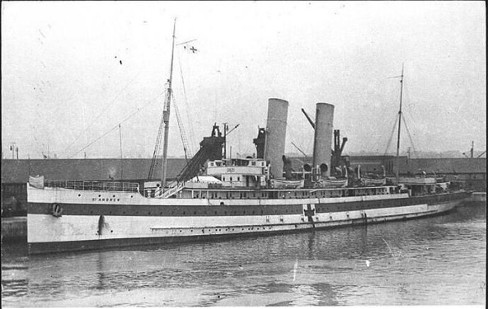
Posted to the EORD (Eastern Ontario Regimental
Depot) while in hospital.
Following hospitalization in England, he
returned to Canada and was discharged from the CEF
|
|
The 1921 Canadian Census shows him living in
Norwood, Ontario and lists his occupation as a Painter
At this point, I lose track of him until his
death
|
|
March 6, 1962, William James Stares died in
Norwood, Ontario and is buried in the Norwood-Asphodel
Cemetery, Norwood ON

|
|
Given the timing of him being invalided to
England, it is quite possible that he was wounded during the fighting at Vimy Ridge. In order to confirm this, a copy of his service
file would need to be consulted. This will be
made available as a free download from Archives Canada in the coming months.
I would like to thank David Young for sharing the
images of the sketches that William Stares drew while serving at the front. Those images are protected by copyright and are
not to be reproduced without his permission. For more information, contact the
webmaster.
|